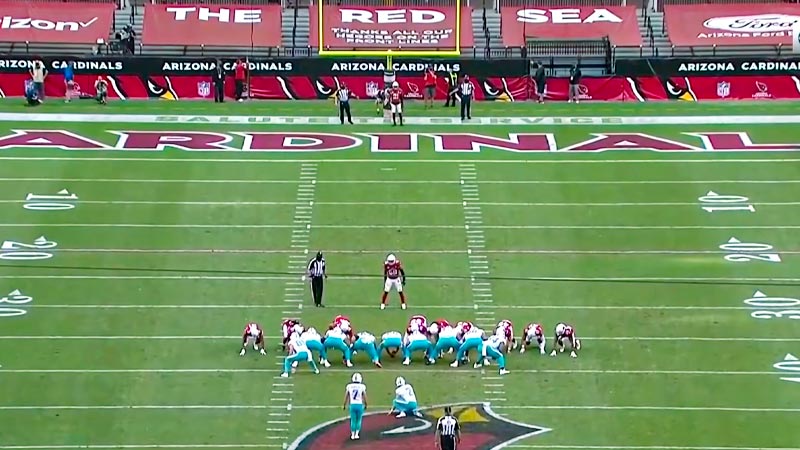Football, the quintessential American sport, brings together the excitement of strategy, athleticism, and teamwork.
While the players take center stage with their skillful plays and dynamic maneuvers, it’s important not to overlook the critical elements that form the stage for this exhilarating game – the football field parts.
From the yard line numbers that guide players’ progress to the press box where journalists capture every moment, each component plays a pivotal role in the game’s unfolding drama.
In this comprehensive guide, we delve into the various parts of a football field, shedding light on their significance and how they contribute to the overall spectacle.
What Are Football Field Parts?
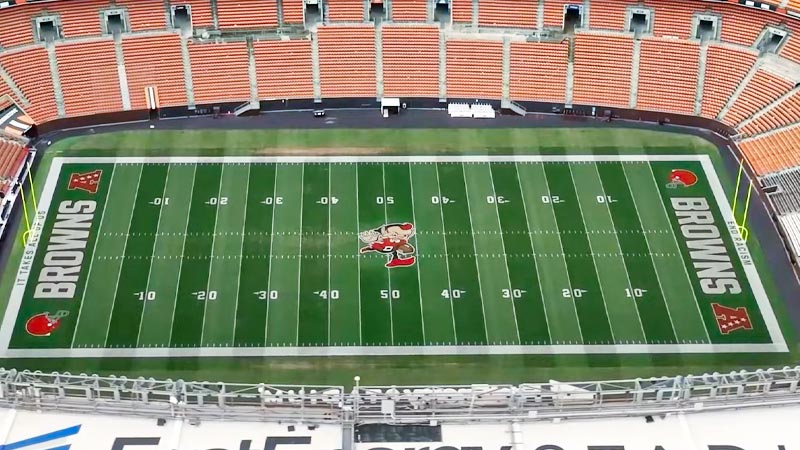
Let’s delve into the various parts of an American football field, describing each one elaborately:
End Zones
The end zones are rectangular areas located at each end of the football field, spanning the width of the field between the sidelines. Each end zone is 10 yards deep (from the goal line to the back of the end zone) and is marked by a white goal line at the front.
The end zones are crucial as they are the areas where touchdowns are scored. A player must carry or catch the ball across the opponent’s goal line and into the end zone to score a touchdown.
Goal Posts
The goalposts are situated at the back of each end zone, in the center. They consist of a tall, upright metal structure with a horizontal crossbar. The two vertical posts extend upward from the ground and are positioned 18.5 feet apart, while the crossbar sits 10 feet above the ground.
Teams attempt to kick the football through the opponent’s goalposts to score an extra point after a touchdown or a field goal. Successful attempts through the goalposts result in different point values, depending on the play.
Sidelines
The sidelines are the boundary lines that run along the length of the field, defining the playing area. They mark the outer limits of the field and help keep the players, coaches, and officials within the designated playing area.
Spectators and team personnel are also located along the sidelines, where they can watch the game and support their respective teams.
Hash Marks
Hash marks are a set of short, parallel lines that are marked on the field between the sidelines. They are positioned in a symmetrical manner, running perpendicular to the sidelines and located equidistant from each sideline.
Hash marks are used to help determine the placement of the football for various plays, such as extra point attempts, field goal attempts, and the placement of the ball after an incomplete pass or a player stepping out of bounds.
Yard Lines
Yard lines are parallel lines that run across the width of the football field at regular intervals. They are marked every 5 yards and are numbered incrementally from one end zone to the other.
Yard lines aid in measuring the distance gained or lost during plays and help determine the line of scrimmage for each play.
50-Yard Line (Midfield)
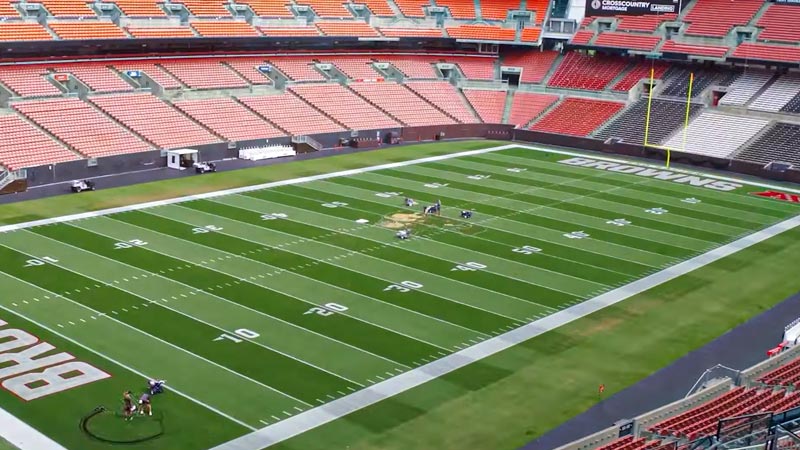
The 50-yard line, also known as midfield, is the line that divides the football field into two equal halves. It is located exactly at the center of the field and is marked with a large “50” in the center.
The 50-yard line is significant because it represents the middle of the field and is used as a reference point for measuring distances and determining possession changes during the game.
Inbounds Lines
Inbounds lines, also known as sidelines, are the boundary lines that run the length of the football field on both sides. These lines define the playable area of the field and mark the limits within which the game is played. Players must stay within these lines during the game to remain in bounds.
The inbounds lines also include the hash marks, which are shorter lines that extend from the sidelines and help determine the placement of the ball for each play.
Out of Bounds Lines
The out-of-bounds lines, situated parallel to the in-bounds lines on both sides of the field, mark the areas beyond which the ball is considered out of play.
When a player or the ball crosses these lines, the play is declared dead, and the ball is typically placed at the point where it went out of bounds. The out-of-bounds lines are essential for determining the location of the ball and establishing the boundaries of the playing area.
Pylons (Corner Markers)
Pylons, also referred to as corner markers are small, padded, orange, or fluorescent-colored cones placed at the four corners of the end zone. They help indicate the boundaries of the end zone, which is the area where a team aims to score a touchdown.
Pylons are particularly important during scoring plays or when determining whether a player has successfully entered the end zone with the ball.
Team Benches
Team benches are designated areas on the sidelines where players, coaches, and other team personnel sit during the game. These benches are situated along the length of the field, providing players with a place to rest and strategize during breaks in the action.
The benches are equipped with seating, water stations, and equipment for players, and they are typically located between the 20-yard lines to ensure clear views of the game.
Coaches’ Boxes
Coaches’ boxes are designated areas on the sidelines where the coaching staff, including head coaches and assistant coaches, can stand or move within during the game. These boxes are marked with lines on the field and are positioned between the 25-yard lines.
Coaches use these areas to communicate with players, call plays, and make strategic decisions. Coaches’ boxes ensure that coaches remain in specified areas and do not interfere with the on-field action.
10-Yard Line (End Zone Mark)
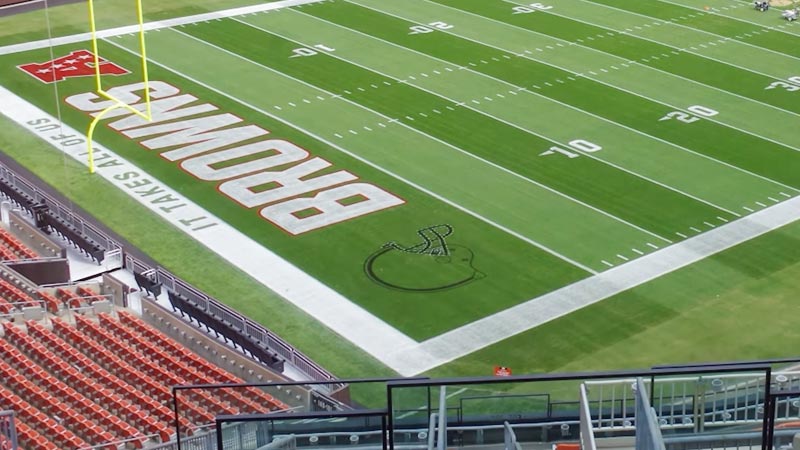
The 10-yard line is a crucial marker on the football field, particularly in relation to the end zone. The end zone is the area at each end of the field where teams attempt to score touchdowns.
The 10-yard line helps determine field position, as it is used for various purposes, such as measuring how far a team needs to advance the ball to achieve a first down or score a touchdown. Additionally, the 10-yard line is significant during kickoffs, as it is the line from which the kicking team initiates play.
20-Yard Line
The 20-yard line is a critical marker on the football field, located 20 yards away from the end zone on either end of the field. It serves as a reference point for both the offensive and defensive teams.
When the offensive team approaches this line, they are getting closer to scoring a touchdown, which is worth six points. On the defensive side, this line is important for determining field position and potentially stopping the opposing team’s advance.
30-Yard Line
The 30-yard line is another yard marker on the field, positioned 30 yards away from the end zone on each end. This line is significant for assessing field position and planning offensive and defensive strategies.
The offensive team aims to cross this line and advance further down the field to enhance their scoring opportunities, while the defensive team seeks to prevent the opposing team from making significant gains.
40-Yard Line
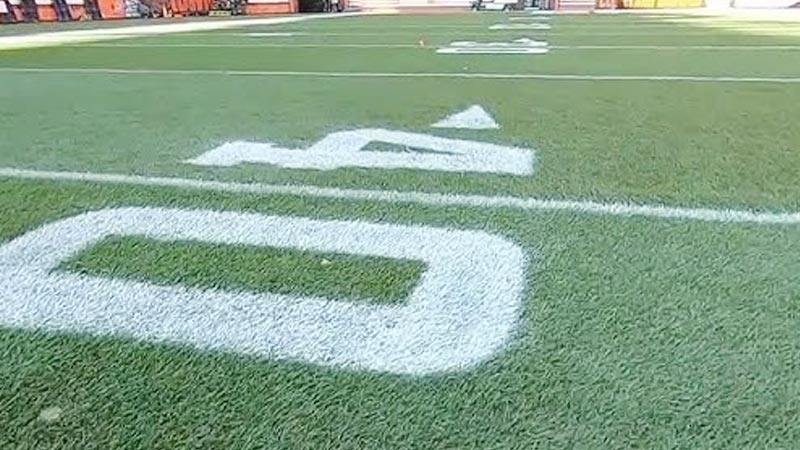
Located 40 yards from the end zone on both ends of the field, the 40-yard line is a midpoint marker that is important for understanding field position. Teams often use this yard line to gauge their progress and make strategic decisions.
For the offensive team, crossing this line means they are moving toward the opponent’s end zone, while the defensive team aims to hold their ground and prevent any further advancements.
40-Yard Line (Opposite Side)
Mirroring the 40-yard line on the opposite end of the field, this yard marker holds the same significance as the previously mentioned 40-yard line.
It provides a balanced perspective for both teams and helps maintain fair play and consistency throughout the game.
30-Yard Line (Opposite Side)
Similar to the 30-yard line on the other side of the field, this marker serves as a reference point for field position and strategic planning.
Teams assess their progress and decide on their plays based on their proximity to this line, with the offensive team seeking to advance and the defensive team trying to halt their progress.
20-Yard Line (Opposite Side)
The counterpart to the 20-yard line on the opposite end, this marker maintains the same significance as its twin.
It indicates the proximity to the end zone and plays a role in both offensive and defensive strategies as teams move closer to or farther away from scoring positions.
10-Yard Line (Opposite Side)
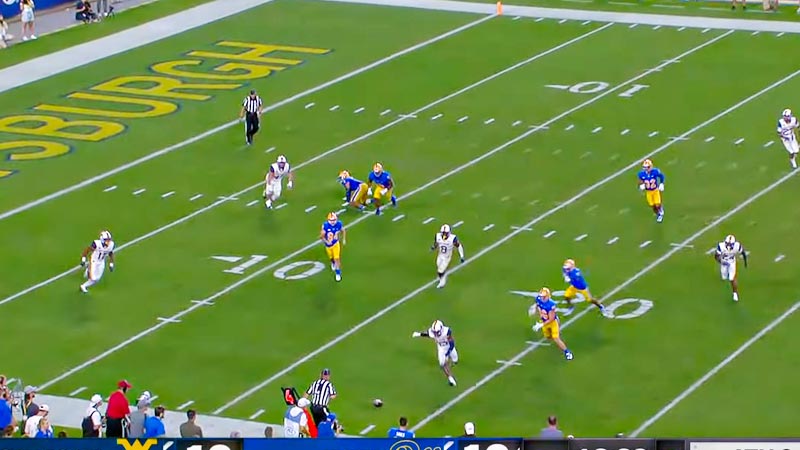
The 10-yard line is a significant part of an American football field located on the opposite side of the field from where the offensive team begins their possession. It is situated 10 yards away from the end zone, which is the area the offensive team aims to reach in order to score a touchdown.
The 10-yard line serves as an important marker for tracking a team’s progress down the field. Teams must cross this line to continue moving toward the end zone and ultimately score points.
Yard Line Numbers
Yard line numbers are essential markings on the field, indicating the distance from the end zones. These numbers are located along both sides of the field and serve as visual references for players, coaches, officials, and spectators.
The numbers are typically painted in large, contrasting colors to enhance visibility. Yard line numbers are placed at intervals of 10 yards, starting from the goal lines (0-yard line) and progressing toward midfield.
Chain Crew Area
The chain crew area is a designated space on the sideline where the chain crew operates. The chain crew consists of individuals responsible for accurately measuring the distance a team must travel to gain a first down.
The area includes markers and equipment used to mark the spot where the ball is placed and track the progress of each play. The chain crew ensures the fairness and accuracy of measurements, making it an integral part of the game’s officiating process.
Press Box
The press box is a multi-level structure located at the top of the stadium, usually situated between the 20-yard lines. It provides a vantage point for journalists, announcers, photographers, and other media personnel to cover the game.
The press box is equipped with amenities such as seating, workstations, communication tools, and audiovisual equipment to facilitate live broadcasting, commentary, and reporting. It serves as a hub for media coverage and analysis during the game.
Play Clock
The play clock is a countdown timer visible to players, coaches, officials, and fans. It is strategically positioned on the field, usually above or near the end zones. The play clock starts ticking immediately after the previous play concludes and provides a set amount of time for the offensive team to initiate the next play.
In professional football, the play clock typically counts down from 40 seconds. Failure to snap the ball before the play clock expires results in a penalty for delay of the game.
Yard Line Markers
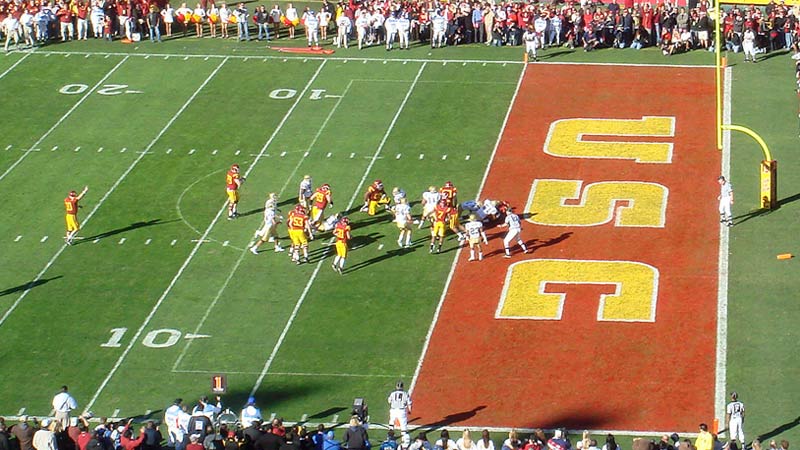
Source: wikipedia.org
Yard line markers are additional indicators on the field, often placed on the sidelines at five-yard intervals. These markers help players, officials, and spectators track the progress of the game and determine the exact position of the ball.
They aid in measuring distances for penalties, first downs, and other critical aspects of the game. Yard line markers contribute to the precision and fairness of the game’s execution.
These components collectively enhance the functionality, organization, and spectacle of an American football field, ensuring a seamless and engaging experience for everyone involved.
FAQs
What is the purpose of the 10-yard line on the opposite side of the field?
The 10-yard line on the opposite side of the field serves as a reference point for assessing the distance a team must cover to achieve a fresh set of downs or score a touchdown. Teams aim to advance the ball beyond the opponent’s 10-yard line to maintain possession and continue their drive.
How do yard line numbers aid players and officials during the game?
Yard line numbers are essential visual markers that indicate the distance from the end zones. These numbers help players, officials, and spectators easily track the ball’s progress, measure penalties, and determine first-down distances, contributing to the accuracy and fairness of the game.
What is the role of the chain crew area in American football?
The chain crew area is a designated space on the sideline where the chain crew operates. Comprising individuals responsible for measuring distances, the chain crew ensures the accurate placement of the ball and monitors progress, ensuring the game’s integrity and fair officiating.
How does the press box enhance the football experience for media and fans?
The press box, positioned atop the stadium, is a hub for media personnel to cover the game. Equipped with workstations and communication tools, it enables live broadcasting, commentary, and reporting, providing fans with in-depth analysis and insights beyond the field.
What is the purpose of the play clock in football games?
The play clock is a countdown timer that starts after each play concludes. It gives the offensive team a set time to initiate the next play, promoting a fast-paced and dynamic game. Failure to snap the ball before the play clock expires results in a penalty for delay of the game.
Wrapping Up
The football field is not merely a stretch of grass but a carefully orchestrated arena with distinct parts that collectively contribute to the magic of the game.
From the precision of yard line markers to the urgency of the play clock, these components ensure that every play, every yard gained, and every touchdown scored is a moment of calculated brilliance.
As fans cheer from the stands and players execute their strategies on the field, let’s remember that it’s the synergy of these football field parts that transforms a simple game into an electrifying spectacle that captures the hearts of millions. Thank you for your time.

